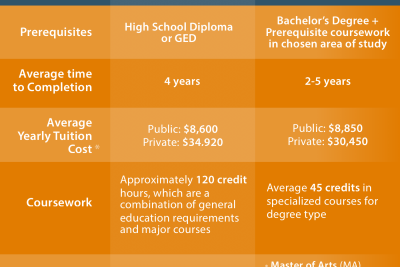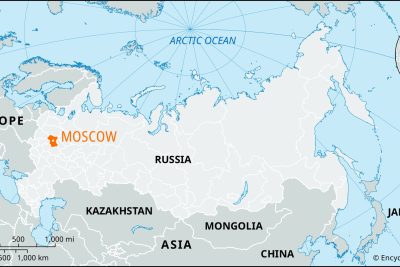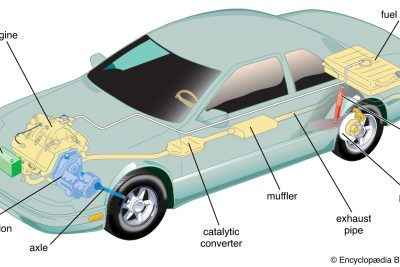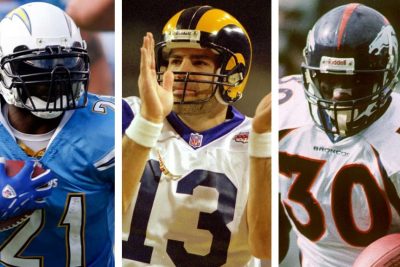
Convergence: Definition, Impact, and Real-World Examples

The concept of convergence has become a crucial topic in understanding the rapidly evolving landscape of technology and media. As we delve into the definitions and implications of convergences across various sectors, it is essential to recognize how this phenomenon intertwines multiple forms of communication and information delivery. The rise of digital technologies and the Internet has sparked a considerable shift in how content is produced, shared, and consumed, creating a unique convergence of platforms.
Moreover, as industries continue to adapt to the implications of media convergence, the impact is increasingly evident in the way we interact with information daily. The blending of media formats, such as text, video, and interactive elements, has changed the dynamics of traditional industries, paving the way for innovative approaches to content creation and distribution. In this article, we will explore the definition of convergence, its impacts on various industries, real-world examples, and the future trends shaping this transformative force.
- Understanding Convergence: A Definition
- The Impact of Media Convergence on Industries
- Real-World Examples of Media Convergence
- The Evolution of Cross-Media Content
- The Role of Technology in Driving Convergence
- Industry Mergers: A Response to Convergence
- Challenges Faced by Merged Entities
- Future Trends in Convergence
- Conclusion: The Ongoing Influence of Convergence
Understanding Convergence: A Definition
At its core, convergence refers to the process by which distinct technologies and media formats come together to create new functionalities and experiences. This phenomenon can be observed in various aspects, including the integration of telecommunications, computing, and content production. In essence, convergencce signifies a blending of boundaries, leading to a seamless experience for users.
In the context of media, convergenc involves the merger of traditional media forms, such as television, radio, and print, with digital platforms and technologies. This fusion allows for content to be disseminated across multiple channels, enhancing accessibility and engagement. As a result, consumers can interact with media in a more personalized and dynamic manner than ever before.
The Impact of Media Convergence on Industries
The impact of media convergence is multifaceted, influencing various industries, including media, entertainment, telecommunications, and technology. By breaking down silos between different media channels, convergeance allows for more efficient content creation and distribution, facilitating greater reach and engagement with audiences.
For instance, newspapers are no longer confined to print but have adapted to digital platforms by offering online articles, podcasts, and video content. This change reflects a broader trend toward convergance in which media organizations strive to meet the diverse preferences of consumers who engage with content across various devices and formats. Additionally, the ability to leverage social media for content distribution further illustrates the evolving landscape of media due to onvergence.
Real-World Examples of Media Convergence
Several real-world examples showcase how media convergence has reshaped industries. One notable instance is the rise of streaming services like Netflix and Hulu. Initially launched as DVD rental services, these platforms evolved into comprehensive media hubs, offering a vast array of content, including films, television shows, and original programming. This transformation exemplifies how traditional entertainment formats have converged with digital technology to create a new viewing experience.
Another prime example is the integration of mobile applications that encompass multiple functionalities. Applications like Instagram and Snapchat allow users to capture, edit, and share photos and videos, all while incorporating messaging features. In doing so, they demonstrate the combined power of photography, video sharing, and social networking, highlighting the ongoing influence of convergenc in everyday life.
The Evolution of Cross-Media Content
As media convergence continues to shape industries, the evolution of cross-media content has become increasingly apparent. Organizations are now producing multimedia content that can be consumed across various platforms, facilitating a more engaging user experience. For instance, a single news story may be presented in the form of a written article, an audio podcast, and a video report—each tailored to suit different audience preferences and consumption habits.
This approach not only broadens the reach of content but also encourages deeper engagement from consumers. By leveraging various media formats, companies can create cohesive marketing campaigns that resonate with their target audiences. This shift toward cross-media content underscores the significance of convergeance and the need for businesses to adapt to changing consumer behaviors and technological advancements.
The Role of Technology in Driving Convergence
Technology is a key driver of media convergence, enabling the seamless integration of various media formats and platforms. Advancements in digital technology, such as high-speed internet, cloud computing, and mobile devices, have facilitated this process and opened new avenues for content creation and distribution. The advent of media convergence servers has further enhanced this capability, allowing organizations to manage and distribute content across multiple channels effectively.
Additionally, technologies like artificial intelligence (AI) and machine learning are being utilized to analyze consumer preferences and behaviors. This data-driven approach enables organizations to tailor their content to specific audiences, maximizing engagement. The fusion of technology and media exemplifies how convergences are not only reshaping industries but also creating opportunities for innovation and growth.
Industry Mergers: A Response to Convergence
The phenomenon of media convergence has prompted many companies to pursue mergers and acquisitions as a means to enhance their market presence and capitalize on synergies. The late 1990s and early 2000s witnessed significant mergers, such as the acquisition of Time Warner by AOL. These mergers aimed to unify content creation and distribution under one roof, leveraging the strengths of both entities to create a more comprehensive media offering.
However, not all mergers have yielded the anticipated benefits. The AOL-Time Warner merger serves as a cautionary tale, highlighting the complexities of integrating distinct corporate cultures and operational practices. The challenges faced by merged entities often suggest that while convergenc presents opportunities, it also requires careful consideration and planning to realize its full potential.
Challenges Faced by Merged Entities
Despite the potential advantages of mergers in the context of media convergence, companies often encounter significant challenges during and after the integration process. Cultural differences between organizations can lead to internal conflicts and hinder collaboration, ultimately affecting overall performance. Additionally, regulatory hurdles may arise as companies seek to navigate antitrust concerns and comply with legal requirements.
Moreover, the rapid pace of technological advancement presents another hurdle for merged entities. Companies must continuously innovate and adapt their strategies in response to changing consumer behaviors and emerging technologies. This ongoing transformation requires a commitment to aligning goals, fostering collaboration, and ensuring a shared vision among all stakeholders to leverage the opportunities created by convergences.
Future Trends in Convergence
As we look to the future, several trends are likely to shape the next phase of media convergence. The rise of immersive technologies, such as virtual reality (VR) and augmented reality (AR), offers new possibilities for content creation and engagement. As these technologies become more mainstream, we can expect to see further convergence between gaming, entertainment, and social experiences.
Moreover, the increasing importance of data analytics will continue to drive convergence strategies. Organizations will need to leverage data to understand consumer preferences better and deliver personalized content experiences. As more devices become interconnected through the Internet of Things (IoT), the potential for convergenve will only expand, leading to greater integration of media across platforms and formats.
Conclusion: The Ongoing Influence of Convergence
In conclusion, convergence is an ever-evolving phenomenon that is reshaping the way we engage with media and technology. As we have explored, the impacts of convergeance extend across various industries, with real-world examples highlighting the transformative nature of this dynamic. The role of technology in driving these changes cannot be overstated, as it continues to enable the seamless integration of multiple media formats.
As organizations navigate the challenges and opportunities presented by convergency, it is essential to remain agile and responsive to the shifting landscape. Future trends will undoubtedly extend the reach of media convergence, creating new opportunities for engagement and innovation. As we move forward, the influence of convergence will only continue to resonate across various sectors, shaping the future of communication and content consumption.
Did you find this article helpful? Convergence: Definition, Impact, and Real-World Examples See more here Education.
Leave a Reply






Related posts